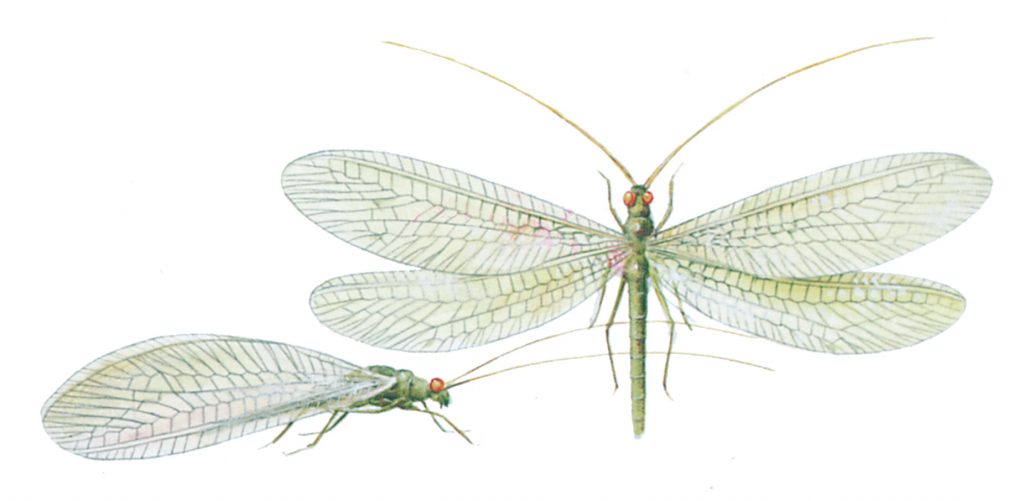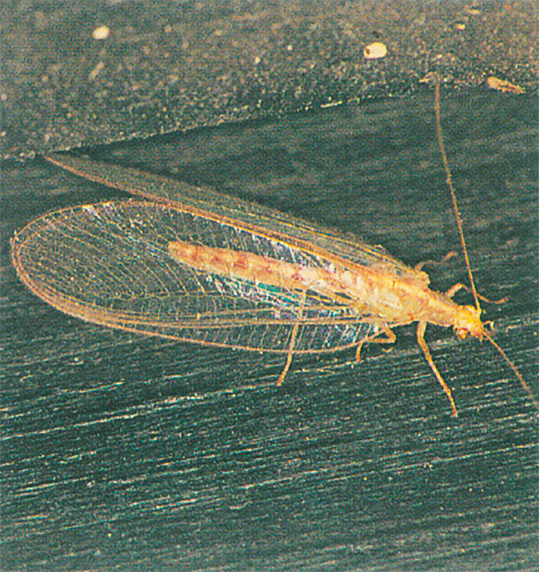(Latin: Chrysopa carnea)

With its large, translucent greenish wings, this is one of the most elegant insects. Seen in the right light the eyes shine like gold.
During the summer lacewings live out in the open, flying silently around at night, and they are sometimes attracted into houses by the light. In autumn they start to look for a place to spend the winter, and some will then find their way into houses, and particularly lofts and outhouses. In the wild they spend the winter under bark or in similar sheltered spots. If their hiding-place becomes warm during the winter they will wake up, and this means that they will die quite quickly of hunger.

If, on the other hand, the temperature remains low the lacewings will remain motionless throughout the winter, and will only wake up when it becomes warmer in spring. In a house they will then try to move outdoors and they can then often be seen on window-panes, where they may die of hunger and thirst. If they do manage to get out they search for plants infested with greenfly and lay their eggs in clumps on the leaves. The larvae prey on other small insects, particularly greenfly.
Lacewing populations fluctuate with the numbers of greenfly, and if the latter have been particularly abundant during the summer, large numbers of lacewings will be seen during the following winter.
Besides being attractive, lacewings are therefore beneficial insects, and they should not be destroyed. If they do happen to wake during the winter they should be moved to a cool place so that their activity stops, and in spring they should be helped to reach the garden.




